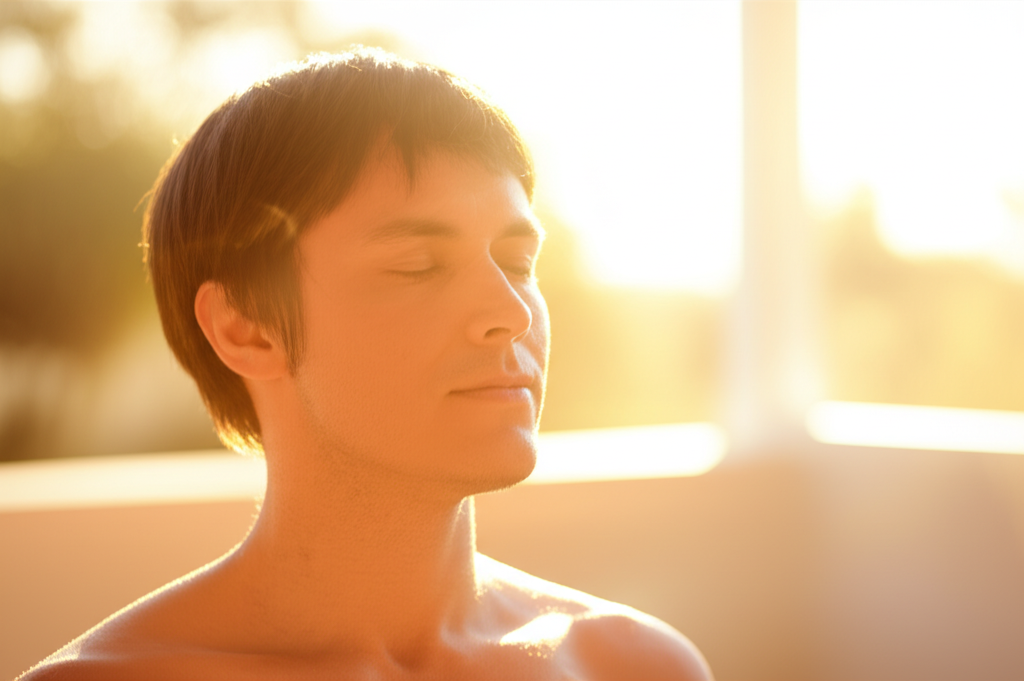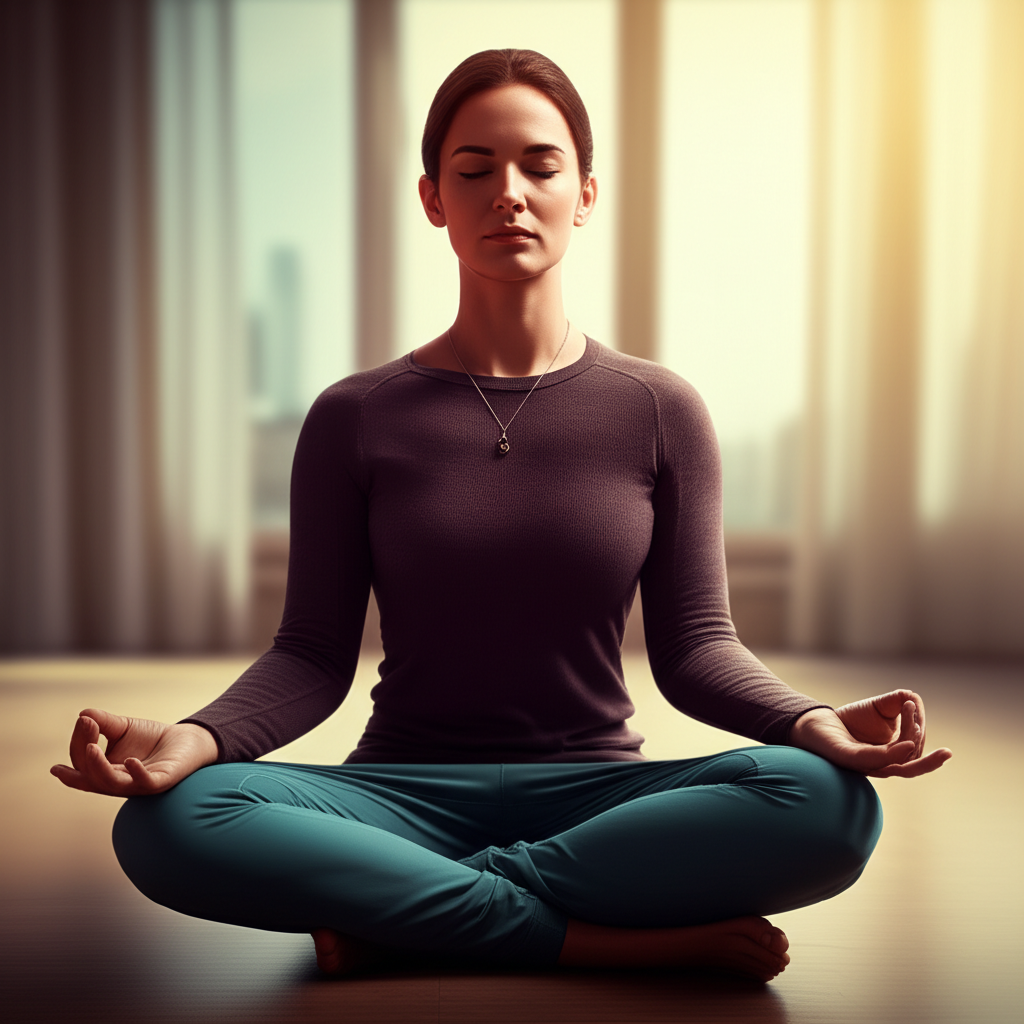Now Reading: Mindfulness Myths Debunked: Beyond Sitting Still
-
01
Mindfulness Myths Debunked: Beyond Sitting Still
Mindfulness Myths Debunked: Beyond Sitting Still

Mindfulness Myths Debunked: It’s More Than Just Sitting Still for True Well-being
Picture this, my friend: someone mentions “mindfulness,” and perhaps your mind instantly conjures an image of a serene person, cross-legged, eyes closed, in a perfectly silent room. Or maybe you imagine someone tirelessly trying to empty their mind, struggling with every thought that pops up, feeling like they’re “failing” at stillness. These are incredibly common perceptions, and sadly, they often lead to frustration, feelings of inadequacy, or even giving up on something truly transformative and profoundly beneficial.
In our wonderfully fast-paced world, the concept of mindfulness has rightly gained immense popularity as a powerful tool for navigating everyday mental health challenges, building resilience, and enhancing our overall well-being. But with this rise in awareness often comes a swirl of misconceptions and stereotypes that can unintentionally prevent us from truly understanding and embracing its vast, life-changing potential.
I’m here as your compassionate guide, ready to walk you through the real truth about mindfulness. Together, we’ll journey beyond the common myths to reveal what mindfulness truly is – an accessible, diverse, and incredibly powerful practice that extends far beyond formal sitting meditations. It’s time to gently separate fact from fiction and unlock the genuine benefits of mindful living for your mental health and peace of mind.
The Foundation: What Mindfulness Truly Is (and Isn’t)
Let’s start by laying a clear and warm foundation. Often, people use “mindfulness” and “meditation” interchangeably, which is totally understandable, but they’re not quite the same. Think of it this way:
- Mindfulness is a fundamental human capacity for being fully present and aware of what’s happening within us and around us, without judgment. It’s a state of being, an awareness, a gentle quality of attention that can exist in any moment, whether you’re formally practicing or just living your life. It’s like the sunshine – it’s always there, even if clouds temporarily obscure it.
- Meditation, on the other hand, is a formal practice or a *tool* we use to cultivate that state of mindfulness. Sitting meditation is one wonderful form, but it’s just one path among many! Think of meditation as your dedicated “mindfulness gym” – a specific time and place where you intentionally train your attention muscle. This training helps you bring that mindful awareness into every corner of your life.
The core principles of mindfulness involve a few beautiful qualities of attention:
- Present-Moment Awareness: Gently tuning into the here and now, rather than dwelling on the past or getting caught up in worries about the future. It’s about noticing what’s unfolding right in front of you.
- Non-Judgment: Observing your thoughts, feelings, and sensations as they arise without labeling them as “good” or “bad,” “right” or “wrong.” It’s simply noticing what is.
- Acceptance: Acknowledging and allowing your experiences to be exactly as they are, even if they’re uncomfortable or unexpected. This isn’t about liking them, but about creating space for them.
- Observation with Curiosity: Noticing the details of your internal and external world with a gentle, open curiosity, almost like a friendly scientist exploring a new phenomenon.
Common Mindfulness Myths Debunked: Beyond the Stereotypes
Myth 1: Mindfulness is about emptying or clearing your mind.
Reality: Oh, if only it were that simple, my friend! Your mind is wonderfully designed to think – it’s often affectionately called the “monkey mind” because it naturally jumps from thought to thought. Mindfulness isn’t about stopping this natural process, which would be like trying to stop your heart from beating. Instead, it’s about observing those thoughts and feelings as they appear, without getting swept away by them or judging yourself for having them. It’s like watching clouds float by in the sky; you acknowledge them, but you don’t feel the need to get on board and ride them away. You simply notice, and gently return your focus to your breath or another anchor. This practice of non-identification with thoughts is incredibly liberating for your mental health and inner peace.
Myth 2: Mindfulness is just relaxation or always feels good.
Reality: While a wonderful sense of calm can certainly be a lovely byproduct of consistent practice, the primary goal of mindfulness is awareness and self-regulation. Sometimes, when you truly turn inwards with gentle attention, you might uncover uncomfortable feelings or sensations that have been lurking beneath the surface. And guess what? That’s perfectly normal and even productive! Mindfulness provides you with the gentle yet powerful tools to work with these challenging emotions, rather than avoiding or suppressing them. By embracing the full spectrum of your emotions, you build true inner strength and resilience, which offers far greater long-term benefits than just immediate calm. It’s about learning to be with whatever arises.
Myth 3: Mindfulness is a religious or spiritual practice.
Reality: It’s true that mindfulness has deep, rich roots in contemplative traditions, particularly Buddhism. However, modern mindfulness, exemplified by widely recognized programs like Mindfulness-Based Stress Reduction (MBSR) developed by Jon Kabat-Zinn, is entirely secular and evidence-based. It focuses on the practical, universal benefits for everyday well-being and is genuinely accessible to anyone, regardless of their beliefs or background. It taps into a universal human capacity for attention and awareness, not tied to any specific dogma or faith. You don’t need to change your beliefs to practice mindfulness, only your attention.
Myth 4: Mindfulness is a quick fix or instant solution.
Reality: Just like building a physical muscle, developing a mindful awareness is a skill that requires consistent mindfulness practice and a generous dose of patience. You wouldn’t expect to be a marathon runner after one jog, would you? The benefits of mindfulness, such as enhanced emotional regulation, stress reduction, increased focus, and deeper self-compassion, accumulate gently over time with small, consistent efforts. It’s a beautiful journey of discovery, not a sprint to a fixed destination, and the lasting results are truly worth the dedication. Be kind to yourself as you grow.
Myth 5: You need special equipment, a quiet space, or lots of time to practice.
Reality: Oh, this is one of the biggest myths that stops so many wonderful people from even starting! You absolutely do NOT need a meditation cushion, burning incense, a serene mountain retreat, or hours of silent solitude. Mindfulness can be practiced anywhere, anytime. Even 5-10 minutes of intentional awareness, woven into your day, can be incredibly beneficial. The true beauty of mindfulness is its profound accessibility, allowing for seamless integration into even the busiest of daily routines. This myth truly undermines the potential for everyday mindfulness, which is where its real power lies.
Myth 6: Mindfulness makes you passive, weak, or lose your ‘edge.’
Reality: Quite the opposite, in fact! Research consistently suggests that mindfulness actually enhances self-awareness, deepens emotional regulation, sharpens clarity, and significantly improves decision-making abilities. Rather than making you passive, it cultivates the powerful ability to respond intentionally instead of reacting impulsively. This leads to increased inner strength, often described as genuine “grit” or vitality, empowering you to navigate life’s challenges with grace, wisdom, and intentional action. It helps you find your *true* edge – the one based on clarity, not reactivity.
Myth 7: Mindfulness is only for those who are already calm or have severe mental health issues.
Reality: Mindfulness is a universal skill, a foundational practice beneficial for anyone looking to proactively enhance their overall well-being, manage everyday stress, build resilience, and simply improve their relationship with their inner experiences. While it is incredibly beneficial for supporting individuals navigating mental health challenges, it’s by no means exclusive to them. Think of it as foundational self-care for everyone – a way to nourish your mind, just as you nourish your body, not just a treatment for specific conditions.
Myth 8: If you’re not “blissed out,” you’re doing it wrong.
Reality: This expectation, fueled by idealized images, often leads to immense frustration. The practice of mindfulness is about being present with *whatever* arises – whether it’s peace, boredom, discomfort, restlessness, or joy. There’s no single “right” feeling. In fact, if you’re acknowledging and accepting feelings of discomfort or restlessness during your practice, you are absolutely doing it “right” because you are practicing present-moment awareness and non-judgment. The point is non-judgment of experience and acceptance of all internal states, not chasing a specific euphoric feeling. True peace comes from accepting what is.
Mindfulness in Action: Practical Ways Beyond Sitting Still
Now that we’ve gently cleared the air on what mindfulness isn’t, let’s explore how wonderfully diverse and accessible it truly is. The power lies in informal mindfulness practice – weaving awareness into the fabric of your everyday life. These are not extra tasks, but opportunities to infuse your day with presence.
- Mindful Walking: As you walk, bring your kind attention to the sensations in your feet connecting with the ground, the rhythm of your steps, the air on your skin, the sounds around you. Notice your surroundings without judgment, simply allowing them to be.
- Mindful Eating: Before you take a bite, pause. Notice the colors, textures, and smells of your food. As you chew, savor the flavors, feel the textures, and observe how your body responds. Slow down and truly experience your meal without distraction, allowing each bite to be a moment of presence.
- Mindful Listening: When conversing with someone you care about, truly engage with what they are saying. Put away distractions (like your phone!), make gentle eye contact, and truly listen to understand, rather than planning your reply. Extend this compassionate listening to music, the sounds of nature, or even the hum of your refrigerator – just listen.
- Mindful Mundane Tasks: Infuse full awareness into daily chores. When washing dishes, feel the warm water, notice the soap bubbles, the smooth or rough texture of the dishes. When folding laundry, pay attention to the fabric, the movements of your hands. These moments, often rushed through, are perfect opportunities for present moment awareness.
- Embracing the Pause: Before reacting to a challenging situation, responding to an email, or even reaching for your phone, take just one mindful breath. This brief, intentional pause can create invaluable space for a more thoughtful, less reactive response, significantly enhancing your emotional regulation and well-being.
- Connecting with Nature Mindfully: Step outside, even if just for a moment, and engage all your senses with the natural world around you. What do you see – the texture of a leaf, the pattern of clouds? What do you hear – birdsong, wind? What do you smell – rain, earth? Feel the sun, wind, or rain. Allow yourself to be fully present and connected to the living world.
- A Brief Body Scan: Even without formal sitting, you can do a mini body scan. Take a moment to gently bring your awareness to different parts of your body, noticing any sensations (tingling, warmth, tension, relaxation) without trying to change them. This is a wonderful, accessible way to cultivate mindful awareness of your physical self, right where you are.
Why a Debunked Understanding Matters for Your Well-being
Understanding the true, multifaceted nature of mindfulness is more than just academic, my friend; it’s deeply empowering for your personal well-being journey. By removing these persistent, sometimes subtle, barriers:
- Empowerment: You realize that mindfulness isn’t an exclusive club for gurus or super-calm individuals; it’s a profound, accessible tool available to anyone, anytime, anywhere. This powerfully removes the “I can’t do it” barrier, replacing it with “I can certainly try!”
- Effectiveness: When you practice mindfulness accurately, free from misleading expectations, you engage in techniques that truly yield genuine benefits like increased focus, deeper self-compassion, improved cognitive flexibility, and a greater sense of calm amidst chaos.
- Resilience Building: A clear understanding helps you cultivate true inner peace and the robust ability to meet everyday challenges with grace and wisdom, knowing that discomfort is a part of life and you have the skills to navigate it consciously. This builds genuine, lasting resilience.
- Enhancing Self-Care: It beautifully transforms mindfulness from a daunting “extra task” into an integral, practical, and deeply nourishing component of your daily self-care routine, easily woven into the vibrant fabric of your busy life.
Starting Your Mindful Journey: Gentle Steps for Beginners
Feeling inspired? That’s wonderful! Taking the first step in your mindfulness journey doesn’t have to be complicated or intimidating. Here are a few gentle tips to help you begin, rooted in kindness and simplicity:
- Start Small, Be Consistent: You don’t need to commit to an hour a day. Begin with just 1-5 minutes of intentional mindful breathing or one of the informal practices mentioned above. The key is gentle consistency, not perfection. Try to do a little bit most days, rather than a lot once in a while.
- Embrace Your Breath as an Anchor: Your breath is always with you, a perfect, natural anchor for your attention. Simply notice the sensation of your breath as it enters and leaves your body. When your mind wanders (and it will!), gently guide your attention back to your breath, without judgment. This is the practice!
- Practice Self-Compassion: There will be days when your mind feels extra busy, or you feel distracted. That’s absolutely okay and normal! Treat yourself with the same kindness and understanding you would offer a dear friend. There’s no “failing” in mindfulness, only learning and returning.
- Experiment with Informal Mindfulness: Choose one of the “Mindfulness in Action” examples – like mindful eating or walking – and try it for just one meal or one short walk this week. See what you notice. The everyday moments are rich with opportunities for presence.
- Consider Guided Meditations: If you find sitting quietly challenging at first, try a short guided meditation. Apps like Calm, Headspace, or even free resources on YouTube can offer wonderful, supportive guidance to help you focus your attention.
Conclusion
So, there you have it, my friend. Mindfulness is not about achieving an elusive state of empty-minded bliss or dedicating hours to formal meditation alone. It’s a powerful, accessible tool for cultivating present-moment awareness and a kind, non-judgmental relationship with your inner and outer experiences.
The true beauty of mindfulness lies in its versatility and its profound capacity to meet you exactly where you are, in any moment. It’s about being truly present and aware, not about rigid stillness or forcing a specific feeling. By debunking these common myths, we hope you feel empowered and encouraged to gently experiment with different mindful practices. Even the smallest shifts in attention can lead to profound and lasting changes in your sense of well-being and capacity for deep personal growth.
You’ve got this. Start your mindfulness journey today – explore our other resources for practical self-care techniques and gentle guidance. Your well-being deserves this gift of presence.




















